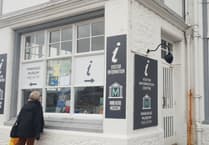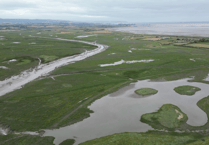THIRTY years ago next month (January) a chapter of Watchet history finally ended when the town’s commercial docks abruptly closed for business.
The shock move also brought the demise of a legendary group of seafarers known as the Watchet Hobblers, who for centuries had been responsible for the movement and berthing of ships in the 1,000-year-old harbour.
In the days of sail, they rowed out to meet vessels, moored them, warped them out of the harbour and often acted as pilots when they sailed away.
The boats were owned by local families, often racing to be first aboard and negotiating a hobbling fee, which was usually about five shillings, and sometimes there were fights between competing crews.
Watchet Market House Museum curator JIM NICHOLAS takes up the story. In 1863, the United Sailors Society to control the activities of the hobblers, was formed at a meeting at the London Inn at the instigation of the landlord, Henry Chidgey, who was also a master mariner and well acquainted with the workings of the hobblers.
The society superseded the Hobblers’ Association which had been the oldest association in the town, going back several centuries. It was not unique to Watchet however and in Ireland, for instance, they had a great hobbling tradition.
“They were men skilled in sailing, courageous men who frequently took risks on dangerous seas, competing against one another and the elements to be first to offer a guiding hand to a ship entering and berthing in harbour,” Cllr Donal Marren, Dun Laoghaire 2002.
However the association was in dire need of change as before 1863, rival groups would compete to be the first to greet any inbound ships, to provide pilotage and mooring services.
This led to much acrimony among the three families operating out of Watchet with their boats Rodney, Telegraph and Frolic, particularly when a boat managed to extract more money from ships’ skippers than their rivals.
After the society was set up and new rules established, earnings were shared between the three families, leading to a much happier community and there were enough ships to keep them all busy. In the last part of the 19th century, Watchet harbour was enjoying a boom time with over 100 vessels trading from the port.
In 1890 the United Sailors Society erected a ‘watch house’ on the West Pier, adjacent to Sammy Hake’s Cottage. There the hobblers would keep a lookout for inbound vessels. This lookout house was taken over during the Second World War by the Coastwatchers who erected an observation tower on top, so commanding a greater view up and down the Channel.
By the mid-20th century the number of hobblers was much reduced as Trinity House supplied pilotage and the hobblers were only needed to warp ships in and out and tend the mooring lines after they had docked.
Half a dozen men, mostly retired, from long-established Watchet families, continued this work until the docks finally closed in January 1993.
Today the ‘watch house’ has been converted to accommodation, providing some of the finest views of the Severn Sea’s spectacular coast.
• Acknowledgements: Tales of Watchet Harbour (Ben Norman), History of Watchet (A L Wedlake/Paul Upton).
Read more about the Watchet Hobblers in Looking Back in this week's West Somerset Free Press




